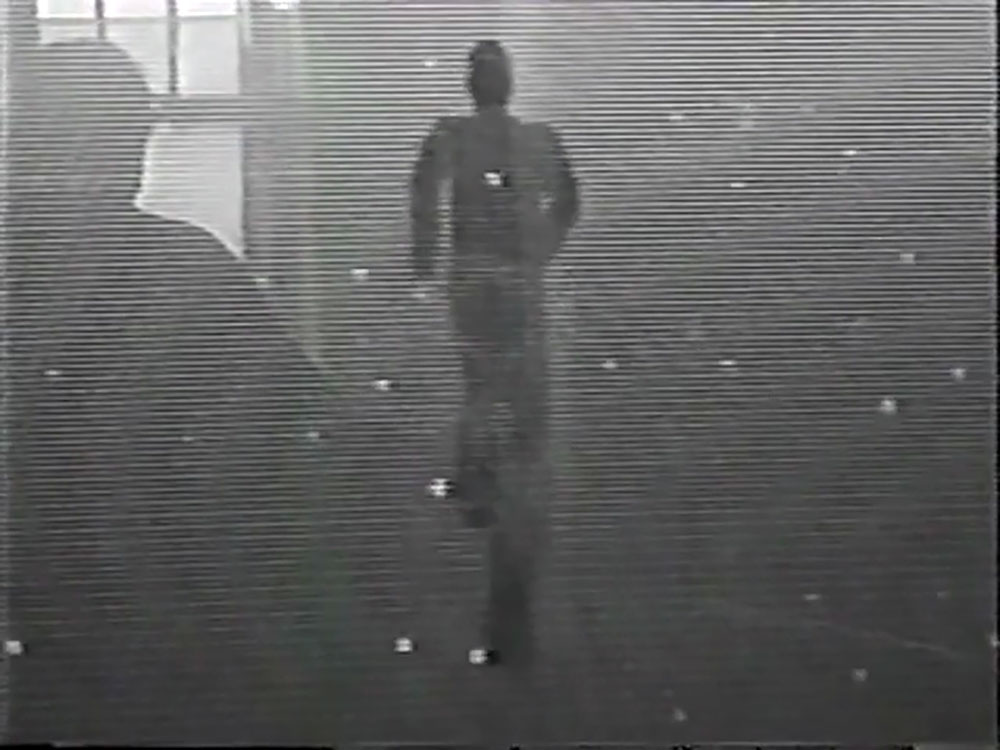In The Dark is the sole feature-length adaptation of a story by horror writer Richard Laymon. Jane, a librarian, receives an envelope at work containing $50 and an invitation to “come play with me,” signed by someone calling themselves the Master of Games. Though she’s initially wowed by the game’s cash rewards, it’s clear this note and the others that follow break the mundanity of Jane’s existence. Whether she carries out or disobeys them, her life is already reshaping around their instructions. Unfortunately, local professor Brace also appears as Nice Guy™ love interest and judgmental opposition to Jane’s participation, insisting she’ll have to “settle for a salary like the rest of us”.
I first heard about In the Dark (2000) on the podcast Live at the Death Factory. Hosts Sean McTiernan and Astrid Rose placed the movie in their sublime “scum cinema” canon, while Spectacle’s program notes describe it as “an art-house slow burn Saw without the on screen torture.” If that makes it sound twizted in the straight-to-video sense, fear not (or despair): the film is confident and committed to playing its premise straight enough to genuinely unnerve.
Spectacle is concurrently screening a series of film adaptations of Jack Ketchum’s horror stories. Though not exactly blockbusters, Ketchum’s slicker adaptations highlight by contrast how effectively In The Dark utilizes its limitations as strengths. Violence is rarely seen, just aftermath, cuts used as gutters for the mind to fill with gore. The pixelation of DV struggling to capture limited practical light at night adds a perpetually squirming overlay, while shooting black and white refocuses the eye to highlights, renders most of suburbia muddy gray, and removes the dating element of color. When color does appear once beyond the film’s opening blood moon,, its queasy palette sets off the rest of the film’s sooty smearing.
In an interview with the TV series Dark Dreamers, Laymon believed that, despite plot diversions due to budget restrictions, In The Dark captured the feel of his novel, something that would not have happened had a Hollywood studio adapted it. While it’s understandable the no-budget film would skip the book’s climactic church face-off, it also swaps Laymon’s curiously conventional ending for a far more nihilistic outcome, something Laymon doesn’t mention. The banality of the film’s locations offer depressing realism Hollywood could never hope to achieve. Besides, the garbage-bag taped windows (a screaming tell any respectable homeowner’s association would immediately note), the home Jane breaks into on a mission is pure middle-class tackiness, save for the film’s only other set dressing: a conspicuous Bosch poster taped to a door. Almost half the film is shots of suburban spaces at night, which turns out to be an economical way of telegraphing emptiness, despair, and uncanniness. These are places just as empty fulfilling their day duties: manicured lawns, parking lots, atriums, decorative facades. Jane’s mere presence as a night pedestrian is freaky enough in this setting that she attracts a pervy jogger believing a fellow nightcrawler must also be down for whatever—not that he’s totally incorrect.
The novel came out in 1994, the movie in 2000. Despite Jane’s baby bangs and PlayStation 1, In the Dark doesn’t seem to be a period piece; curious, as the film includes technology and computers, but not the internet. Someone like Jane, a gamer with a library gig, bored, sarcastic, isolated, seems prime type for an online message board of one sort or another. The enthusiasm with which Jane jumps into the game suggests it offers excitement, purpose, and interaction she’s not finding elsewhere, similar to present-day Q-Anoners ignoring blatant scandals in favor of intricate puzzles of their own invention, centering them as main characters. The Master of Games could easily be a 4channer swatting someone for shits and giggles, but here—as in the book—he remains a wealthy, creepy enigma. The film’s closest analog of digital avatar and avoidance is Jane ‘playing’ Silent Hill, her character endlessly running nowhere, staccato footfalls setting pace and raising questions of control. I could go on, as there’s plenty to talk about after seeing In The Dark, but not much more to say without spoilers, so sink yourself into the digital mire and enjoy the game.
In the Dark screens this evening, October 15, and throughout the month at Spectacle as part of the series “Spectober.”



